The day-job has been really slack the past 3 weeks since the holidays are over. This has provided me with a lot more days in shop. And, these (otherwise) wasted weekends where I sit around in LA waiting for the phone to ring have provided ample time to keep the blog up-to-date. Unfortunately, the crazy days of summer (when everyone is constantly calling in sick) are just around the corner. But, I'll make the best of this while I can.
So, here's what's up lately:
1. Chromate Conversion of Spar Parts.
2. Main Spar Center Section.
3. Press Brake.
4. The CNC Router Vacuum Table.
5. Chicken Run.
1. Chromate Conversion of Spar Parts - In preparation for corrosion treating the wing spar parts, I've located and purchased a 10lbs pail of Iridte 14-2. I found it in the LA area at a place called Gallade Chemical. I paid $26/lbs for the dry power which will make up to 5 gallons of the solution (per pound of dry powder). Aircraft supply places are charging up to $35 per gallon. So, buying dry and mixing my own solution is definitely a substantial cost savings.
The problem is, now I have to get this stuff back to the shop in NorCal. I thought that I'd be able to FedEx it, since they do accept HazMat for shipment. Unfortunately, they only accept HazMat items from DG certified shippers (Dangerous Goods) . So, now I have 2 options: 1. Find a certified DG shipper that will accept this stuff and ship it for me, and ; 2. Drive it home myself between 2 of my reserve stints down here in LA. I need to call and get a few quotes to see what the shipping option will add to the cost of the material .vs. buying gas to drive it home. We'll see.
After my last post on this subject, Cabi suggested simple wooden pans lined with poly film. After checking into it, we decided that this is probably the most cost effective, simple solution. I will, no doubt, be building these boxes in an upcoming blog update.
2. Main Spar Center Section - I've been working diligently to get the center section of the main spar ready to chromate and assemble. Here's the progress. I started by temporarily assembling the spar parts using pins (roofing nails - hey it works!) in enough of the rivet holes to ensure the parts were lined up in the same way that they will be when permanently assembled.
Machining the bearing blocks is the next step, so I had to measure the room available between the bottom of the top set of cap strips and the top of the bottom set of cap strips. Well, this varied depending on which cap strip happened to be sticking out the most (from the rest). This made it obvious that I'd have to machine down all the cap strips (assembled as a single unit - minus the shear web). So, after taking the "stack" back apart, then re-assembling only the bottom strips into a stack and putting it into the mill - here's what it looks like (sorry, the pic is a little over exposed):
The object here is to even out the edges of the cap strips to a uniform dimension so that the bearing blocks can be machined to go between them. This unevenness is a result of the "manual" process used to fabricate these parts before I got up on the CNC production processes. When I make these using the CNC processes, this will not be a problem (for future kits). Here's a shot that shows the before and after of this step:
With this step completed for both the top and bottom sets of cap strips, now a definite measurement could be made of the space between the top and bottom sets of caps strips. Then the machining of the bearing blocks could begin (knowing this new dimension). Here's the raw stock being prepped, cleaned up, squared:
Here's a shot of one (of 4) bearing blocks getting the initial hole bored.
This was pretty close to the limit of use of a hole saw, but it worked and the finish didn't matter since the hole will be cleaned up in the next step.
This rough hole is then opened as needed with a boring bar:
Here is the first test fit of the bearing blocks onto the area of the spar between the caps. Of course, it's close, but doesn't quite fit. A little more machining on the bearing block edges fixed that.
When I got the thin portion of these bearing blocks down to 1/16" I stopped taking material off of the bearing blocks and went back to removing material from the appropriate sides of the cap strips (more milling). Eventually, I got the bearing blocks to all fit nicely on both sides of the spar web. Here's a shot:
And some close ups:
Notice the bearing blocks are sticking out farther that the cap strips. These need to be flush to the cap strips (plus 0.040" for the skin flanges that I'd forgotten about up til now - yay). So, now I just need to face mill the bearing block to the correct thickness, like this:
Here's the completed bearing blocks (minus face milling) with the bearings installed. Here you can see that the forces of the main landing gear torque tubes are transferred to the bearing blocks, which in turn transfer these loads to the spar cap strips and web, and eventually into the entire wing (which is what you want to have happen):
The one remaining step is to drill and tap a hole in the forward bearing blocks to insert a grease fitting for periodic maintenance (some day).
Once the bearing blocks were installed, I had to re-assemble the "stack" and clean up the edges of the cap strips on the top and bottom of the spar. Here's the whole stack set up for doing this. I decided to do this by hand rather than try to get this whole (100 lbs) stack into the mill:
The file you see sitting on the top of the spar stack is a babbit file. George told me about these files and they do a great job of cleaning up the edges of thick AL pieces. They are actually made for filing large journal bearings made of babbit, but work great for this too. Here you can see a before and after of what the edges of the spar stack looked like. In the before pic you can see the router marks on several of the edges. On the after shot you can see the router marks removed and a nice smooth edge in it's place:
With all of this done, here is the spar stack completed with the bearings and bearing blocks installed:
Now, I still have to cut out the skin flanges for the main spar center section. This actually consists of 10 pieces (3 on each top edge and 2 on each bottom edge). I will have an update on fabricating these in a future post. I also have to clean up the faces of each of the spar parts with a scotchbrite rol-lok disc. These work great to clean the junk off of the aluminum. I started to do this (you can see the top cap strip above is more shiny than the bottom one and the shear web). But, I didn't continue to do this to all the parts now, since the metal would start to oxidize again before I get to the chromating. I decided that it would be wiser to do this just before the chromate conversion process, since this will make the etching step go more quickly.
3. Press Brake - In the last post, I showed how I installed the hydraulics to make the press brake operational. Well, with the hydraulics worked out it was time to start trying to "calibrate" this machine and figure out a process to get consistent bends out of it. I started by fabricating a "stop" system to stop the lower die beam at a pre-determined point. What I came up with was a 1/2" thick piece of flat steel that was 4" long and 2" wide for a top stop. This piece was bolted to the side frames and is mounted up to the upper die beam. On the bottom I used a 1" thick piece of steel to use sit on the lower die beam. Using these pieces in this configuration will provide for the use of calibrated "stop blocks" that do not have to be large and/or tall. Here's a pic:
The area between these stop pieces is where the calibrated "stop block" will be placed. Then, when the hydraulics is activated, the lower die beam will move up until it hits the stops. There will have to be a different stop block made for each angle of bend that is desired. Also, the LH stop blocks are not the exact same thickness that are required on the RH side. So, I'll end up having a set of 90 degree stop blocks, a set of 85degree stop blocks, etc.
In order to try to determine what the "ballpark" value will be for each angle of bend, I next cut up several 1-1/2" x 2" pieces of 2024-T3 (0.040"). I used these pieces to do test bends to collect empirical data to use to plot on a graph. Using different thicknesses of stop blocks I bent test pieces for each and then measured the resulting angle of bend. Here's the pieces that I used to obtain this data:
Then, I plotted this data to get this:
As you can see, this is a pretty linear relationship between bend angle in degrees along the X axis and the associated stop block thickness along the Y axis. The red data and line is for the RH stop block and the blue is for the LH stop block. The difference in thickness (for the RH and LH blocks) is the result of the stopping system on the LH and RH not having the exact same gap between the upper stop and lower stops. So, overall this data made sense and seemed to give some positive results. But, when I tried to machine a stop block of a given thickness and then get the bend angle that is indicated in the graph, the results were not consistent. I could use the same set of stop blocks and bend three pieces and get three different bend angles. There seems to be too much variability in the process to give predictable results.
After pondering this for a long while, I've come to the conclusion that the biggest variable factor is the pressure being developed in the hydraulics. I do not yet have a pressure gauge installed. Without a gauge, I am likely stopping the bending process on any given piece at a different pressure than the next. This difference in pressure is probably responsible for adding much of the variability to the data (bends). Another factor in play here is that the difference in pressures is most likely causing more or less flexing of the dies (more pressure means more die flex) and this is giving the different bend angles for a given set of stop blocks.
I have an idea for a bending process that may take a lot of the unpredictability out of the process and give consistent results. I just need to come up with a process that gives predictable results before I start tying to bend $100 parts and have them come out messed up and unusable. I'm going to be trying this (more testing) in the upcoming week and I'll have an update in a the next blog post.
4. The CNC Router Vacuum Table - Before I can cut the 10 needed skin flanges for the center section of the main spar, I need to face cut the vacuum table spoil board. I've measured it, and there is about 0.035" difference between the "high" corner and the "low" corner on the spoil board. Now that I've got an acceptable cutter to machine off the "unevenness" of the vacuum table, I have to write a G-code program to get this job done. Here is a pic that shows a section view of how my spoil board is mounted to the vacuum table:
The process of face cutting the top of the spoil board is needed because if the top of the spoil board is not perfectly perpendicular and planar to the spindle, it is more difficult to cut an even distance through a sheet of aluminum laying on top of the spoil board. When you are trying to profile cut parts, you want the end of the cutter to stick out about 0.010" below the bottom of the sheet that you are cutting out of. This eventually "spoils" the board (hence the name) and you have to re-face the spoilboard. So, you can consume most of a sheet of MDF in this process before you need to completely replace it. I am going to try to accomplish this first face cut in the upcoming week as well. I'll have an update in the next post.
5. Chicken Run - The kids have inherited a few more chickens recently, and suddenly the chicken coop is not large enough. With 3 girls batting eyelashes and asking for help, what's a dad to do? A new, larger chicken run to attach to the existing coop. So, here is where a few man-hours went recently.
Lucky chickens!
Well, that's all that's happened in the shop over the past two weeks. I should be getting 2-3 more good slack weeks from the day-job - maybe even a month yet. I'll be in the shop trying to get this wing spar ready to mount in the jig. That's the main goal for now and I'll be keeping the focus on this for the time being. Thanks for stopping by to check on the progress. I'll plan on another update in two weeks.
Sunday, January 29, 2012
Subscribe to:
Post Comments (Atom)






















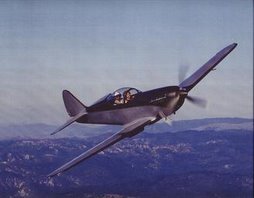
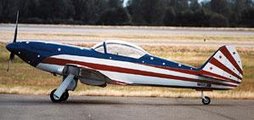
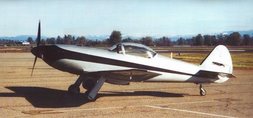
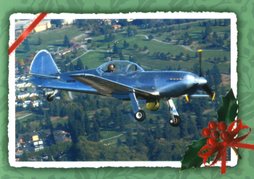
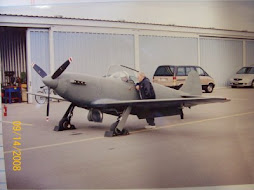
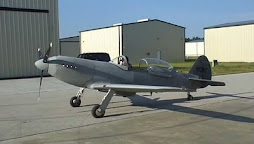

No comments:
Post a Comment